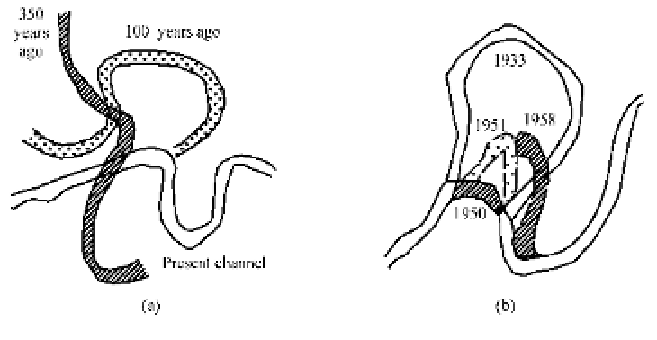Environmental Engineering Reference
In-Depth Information
velocity distribution in meandering streams result in both erosion and deposition at the meander bend.
Erosion occurs at the outside of bends (cut banks) from high velocity flows, while the slower velocities
at the insides of bends cause deposition on the point bar (FISRWG, 1998).
Second important feature of meandering river is the migration of the meanders. Migration can involve
various types of movements: translation, when the bed shifts in position downstream without altering its
basic shape; extension, when the bend moves predominantly in the lateral direction, increasing its
amplitude and path length; rotation, when the bend axis changes in orientation. Figure 5.44 (a) shows the
movement of a meander in the middle reaches of the Yangtze River.
The third feature of a meandering river is the cutoff of the channel. If the flow and bank material
conditions are conductive to a continued increase in the amplitude and tightness of bends, a threshold
sinuosity may be reached, at which the river can no longer maintain its shape and a cutoff develops.
Figure 5.44(b) shows the cutoff of the Nianziwan Bend in the middle reaches of the Yangtze River. The
cutoff occurred in 1950 but the bend extended again after the cutoff. Cutoff can be regarded as a response
Fig. 5.44
(a) Movement of the Chibakou meander in the middle reaches of the Yangtze River; (b) Cutoff of the
Nianziwan Bend in the middle reaches of the Yangtze River (after Qian et al., 1983); (c) Artificial cutoff at Huakou
of the Paizhou Meander is suggested, which causes a big argument











Search WWH ::

Custom Search